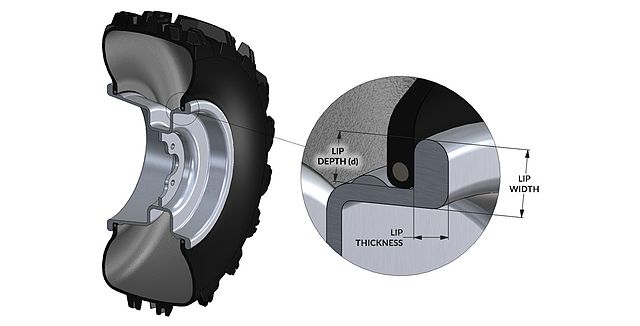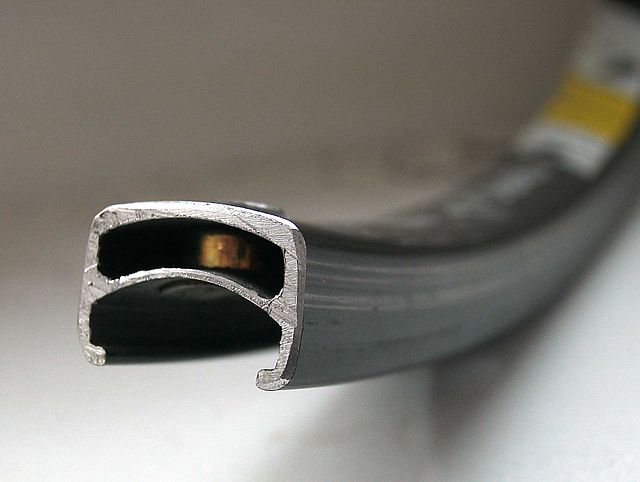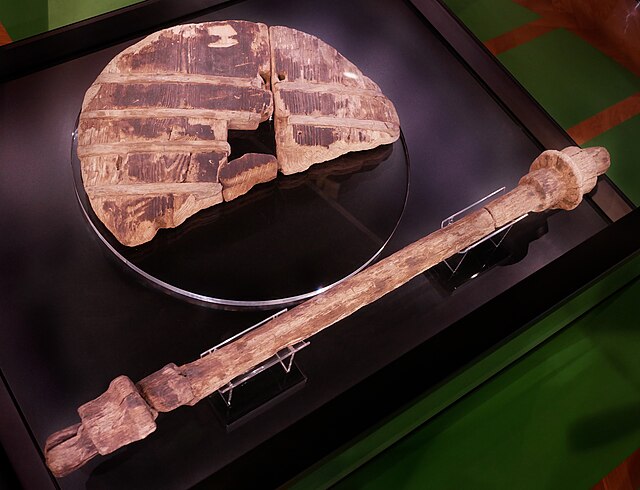The rim is the "outer edge of a wheel, holding the tire". It makes up the outer circular design of the wheel on which the inside edge of the tire is mounted on vehicles such as automobiles. For example, on a bicycle wheel the rim is a large hoop attached to the outer ends of the spokes of the wheel that holds the tire and tube. In cross-section, the rim is deep in the center and shallow at the outer edges, thus forming a "U" shape that supports the bead of the tire casing.
Cutaway diagram of a rim and tire from an ATV
Cross section of a bicycle rim
A wooden bicycle rim with tubular tire
Scratched rim on a one-piece alloy wheel. The black residue remains from where the tire was seated on the "safety profile" rim.
A wheel is a rotating component that is intended to turn on an axle bearing. The wheel is one of the key components of the wheel and axle which is one of the six simple machines. Wheels, in conjunction with axles, allow heavy objects to be moved easily facilitating movement or transportation while supporting a load, or performing labor in machines. Wheels are also used for other purposes, such as a ship's wheel, steering wheel, potter's wheel, and flywheel.
This Ljubljana Marshes Wheel with axle is the oldest wooden wheel yet discovered dating to Copper Age (c. 3130 BCE)
A depiction of an onager-drawn cart on the Sumerian "War" panel of the Standard of Ur (c. 2500 BCE)
Solid wheels on a heavy temple car, contrasted with the lighter wire-spoked wheels of the black roadster bicycle in the foreground
A figurine featuring the New World's independently invented wheel. Among the places where wheeled toys were found, Mesoamerica is the only one where the wheel was never put to practical use before the 16th century.








